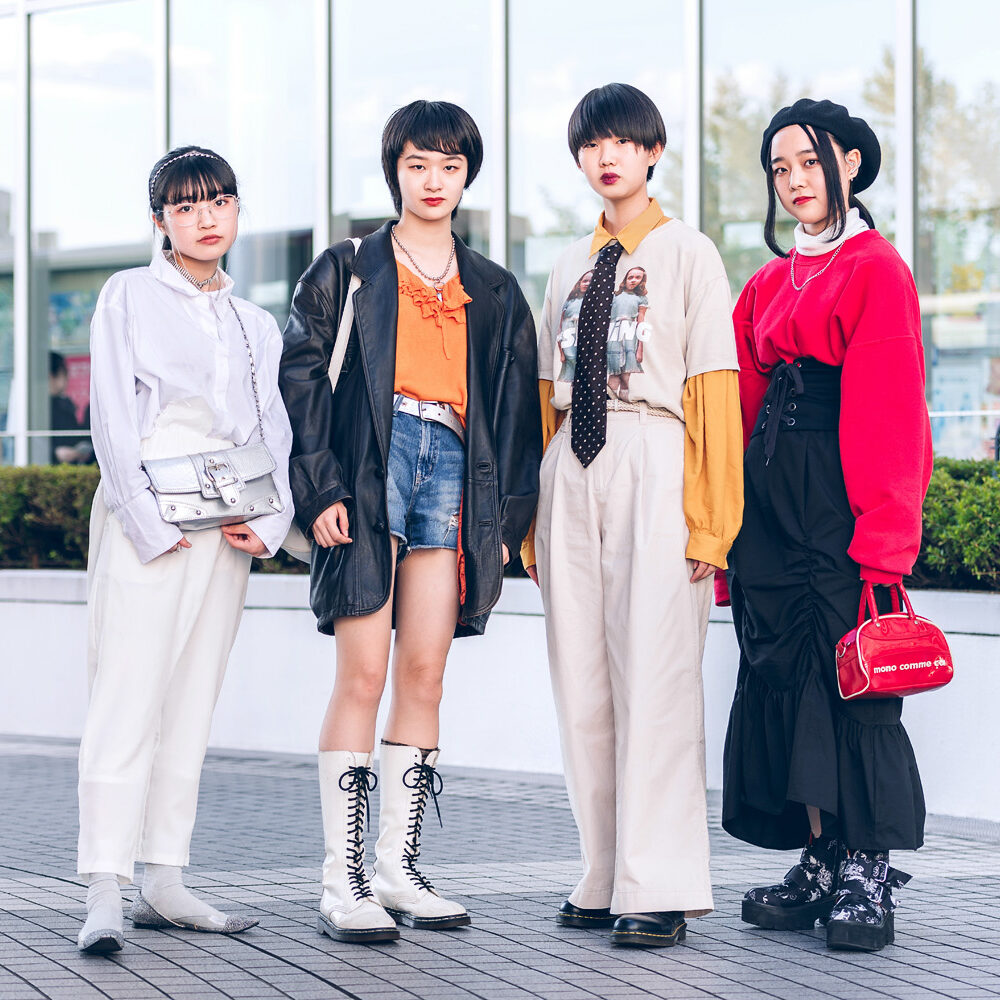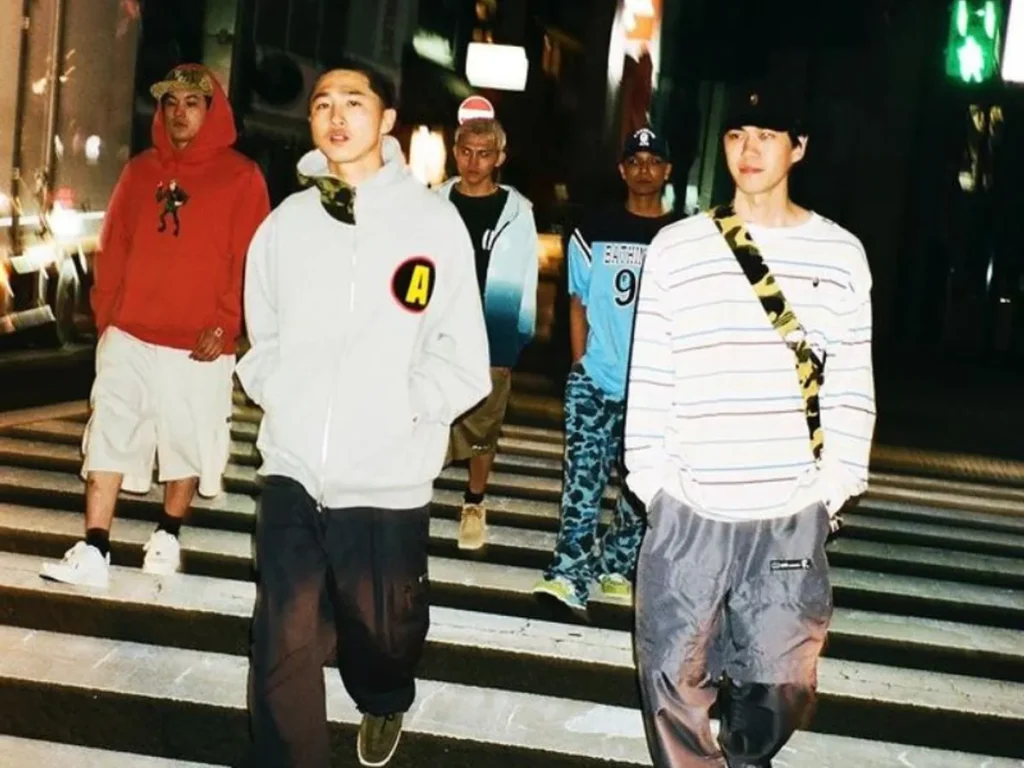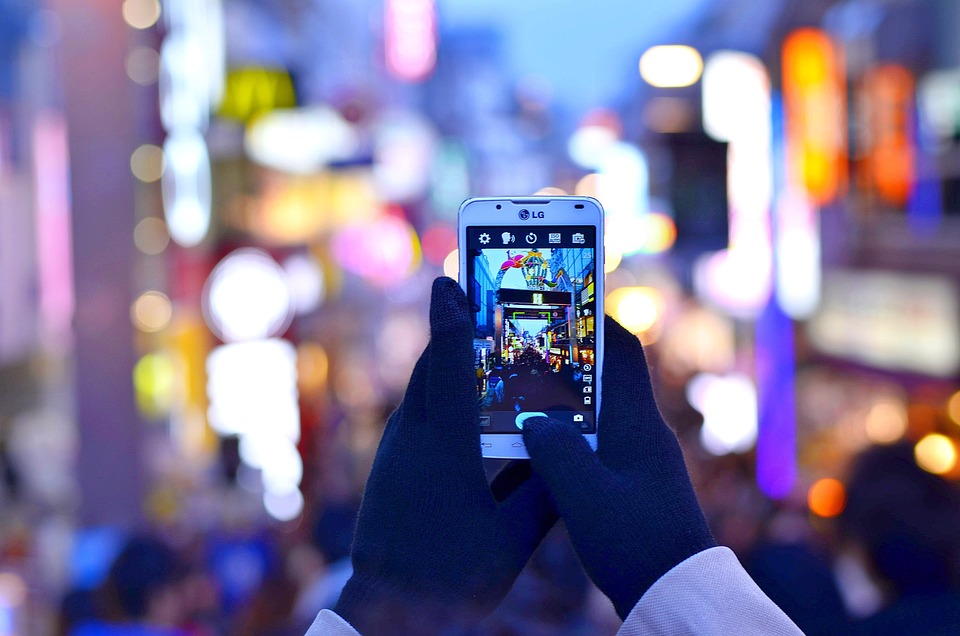Tokyo has long been one of the world’s leading fashion capitals, thanks to its exceptional ability to blend modernity with cultural heritage. Tokyo’s street fashion scene brilliantly embodies this equation, blending traditional Japanese style with a bold urban spirit, producing a unique style that has become a global phenomenon, followed and inspired by fashionistas from around the world.

Roots: The Birth of Japanese Street Culture
The beginnings of Tokyo’s street fashion culture date back to the 1980s and 1990s, a period of rapid cultural change in the city. This emerging wave was influenced by Western pop culture, particularly hip-hop and skate culture, along with Japan’s innovative design sense. This movement emerged as a means of self-expression and rebellion against prevailing norms, resulting in a diverse and provocative style that appealed to a wide range of young people.
Iconic brands emerged at the time, playing a prominent role in shaping the scene’s identity, most notably A Bathing Ape (BAPE), founded by designer Nigo in 1993. Known for its bold camouflage patterns, oversized silhouettes, and distinctive monkey logo, the label became a symbol of Japanese street fashion. Its collaborations with international artists like Pharrell Williams and Kanye West helped shine a global spotlight on the Japanese scene.

In the same vein, other labels emerged, such as Neighborhood, WTAPS, and Undercover, which skillfully blended military, punk, and workwear elements with a sophisticated design sense. In doing so, they contributed to forging a new visual language that blended meticulous craftsmanship with urban rebellion.
The Growth and Evolution of the Scene
At the turn of the millennium, the scene began to expand to include more diverse sources of inspiration. Tokyo’s youth no longer relied on traditional streetwear styles, but began to blend simple streetwear pieces with luxury items from international fashion houses. This trend has been reinforced by the growing collaborations between Japanese brands and international designers, such as Virgil Abloh and Takashi Murakami, in collaboration with major houses like Louis Vuitton, Dior, and Gucci.
The rise of social media, particularly Instagram, has accelerated this phenomenon, with the streets of Tokyo and specifically Harajuku becoming an open platform for the world to draw inspiration from. With its diverse range of stores, from thrift shops to independent boutiques and luxury stores, Harajuku has become the heart of Japanese street fashion.

Subcultures Fueling Creativity
The evolution of street fashion in Tokyo has not stopped at established styles, but has expanded to include new subcultures that have enhanced the richness and diversity of the scene. These include Gyaru, known for its bold and dazzling looks Visual Kei, which draws inspiration from music and theatrical costumes; and Ura-Hara, a style that originated in the back alleys of Harajuku and is characterized by an independent and spontaneous character.
Today, Tokyo’s street fashion is no longer a local phenomenon it has become part of the global fashion language. It influences designers in Paris, inspires skaters in Los Angeles, and serves as a model for blending boldness and cultural identity. Through its street scene, Tokyo has proven that fashion is not just clothing, but a vibrant cultural expression that reflects the transformations of society and the aspirations of its new generation.

